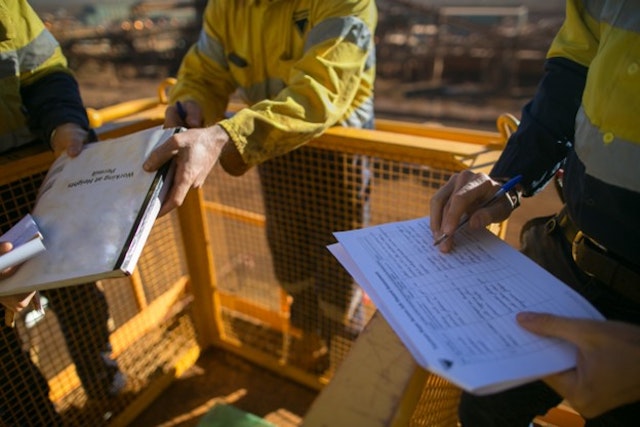- How to Complete a Risk Assessment
How to Complete a Risk Assessment
- Risk Assessment
Peninsula Team, Peninsula Team
(Last updated )
Peninsula Team, Peninsula Team
(Last updated )
Jump to section:
All workplaces present their own types of safety risks – some minor, others more serious. Despite that, employers have a legal duty to conduct necessary risk assessments to control these issues.
By conducting the right assessment, you’ll be able to protect your staff and anyone else in connection to your business premises. These steps help create a safer and more secure work environment.
Employers must comply with the Health and Safety Executive’s ‘Risk Assessment: A Brief Guide on Controlling Risks in the Workplace’. Let’s take a look at what this includes:
Identify potential hazards
The first step to take when carrying out a risk assessment is identifying potential hazards found in your workplace. Employers must think about risks linked to their work equipment, materials, and working practices.
It's important to identify hazards and risks as separate factors. A hazard is something that has the potential to cause injury or illness, whereas a risk is the likelihood that a hazard will occur.
Assess who might be harmed
The second step involves assessing which specific people are at risk of being harmed by hazards. The assessment will identify people who are at low, medium, and high risk (i.e., like pregnant workers). Some people require further safety measures when it comes to protection.
Hazards should also include any that could be afflicted to non-employees found on your premises. For example, customers, clients, or the public. Employers have a legal responsibility to ensure their work practices don’t cause harm to them, as this falls under your duty of care.
Evaluate the risks
The third step is evaluating the risks found within your working practices. You'll need to evaluate the severity of each one and consider how severe their impact could be. Remember, the greater the hazard, the heavier control they may require.
For example, your risk assessments could express a need for personal protective equipment (PPE) whilst working with sick patients. This helps prevent the spread of virus and illness to other vulnerable people within your care home.
Determine control measures
The fourth step of a risk assessment is determining control measures. Control measures are the controls you put in place to reduce risk and prevent harm to both your staff, and the people in your care.
Examples of these are:
- Removal.
- The introduction of procedures and rules.
- The introduction of equipment.
- Providing employee training, for both new starters and refresher training.
Elimination is the best control measure you can introduce, as this eliminates the risk entirely.
Record significant findings
The fifth step involves recording all significant findings of your risk assessment. Businesses are legally obliged to document findings if they hire five or more employees. These are marked as low, medium, and high. In intricate industries, they may require a more in-depth scoring system based on severity and occurrence.
If employees (or general people) are injured due to your work practices, you may be required to report it to the Health and Safety Executive (HSE). (Reporting is an integral part of their inspection process).
Review your risk assessment
The final step involves reviewing your risk assessments on a regular basis. This could be done on a quarterly or annual basis. Or after significant events, like following a work-place accident.
Employers should use their findings to make relevant changes to their work customs and practices. It’s also important to make changes after significant workplace changes, like introducing new equipment, and legislative amendments.
Download a free risk assessment template now
Here at Peninsula, we care about the safety of your business. So we have created a range of free risk assessment templates for you to use when required, such as:
- General free risk assessment template.
- Free construction risk assessment template.
- Free risk assessment in health and social care template.
- Free office risk assessment template.
- Free beauty salon risk assessment template.
- Free risk assessment template for schools.
- Free pregnancy risk assessment template.
- Free bar risk assessment template.
- Free working from home risk assessment template.
- Free lone working risk assessment template.
- Free COSHH risk assessment template.
- Free manual handling risk assessment template.
Get expert advice on risk assessments with Peninsula
No matter what your industry is, all employers have a legal duty to ensure their workplaces are safe to work in. Without the right maintenance, you could end up injuring your staff, customers, or anyone who visits your work premises.
Peninsula offers expert advice on risk assessments. We offer 24-hour H&S advice – ensuring your employees work in the safest and most secure manner. Peninsula also provides a free risk assessment template for you to download and use when required.
Want to find out more? Contact us on 0800 028 2420 and book a workplace risk assessment with one of our risk assessment consultants today.
- How to Complete a Risk Assessment
A fully protected business starts with SafeCheck
Let the UK’s leading Health & Safety consultants carry out your workplace audit - for only £395
